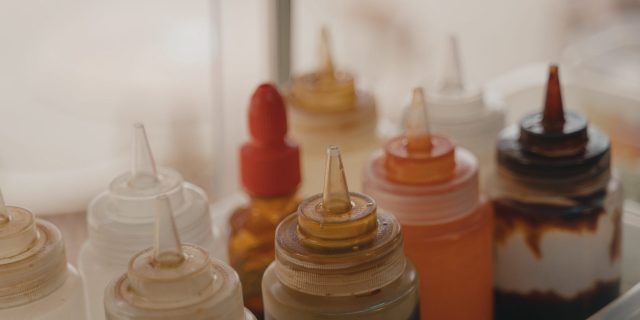
Highly hazardous PFAS (per- and polyfluoroalkyl substances) are leaching out of plastic containers and contaminating food products, according to research published in Environment Technology and Letters this month. The data confirm the results of prior research focused on the propensity of PFAS to contaminate various pesticide products through the storage containers. That data led the U.S. Environmental Protection Agency (EPA) to issue a warning over the potential for direct PFAS contamination of food. The current study, conducted by scientists at Notre Dame University, confirms these worst fears and shows that the containers of commonly used products like ketchup and mayonnaise are leaching out levels that post a threat to human health. “Not only did we measure significant concentrations of PFAS in these containers, we can estimate the PFAS that were leaching off creating a direct path of exposure,” said study coauthor Graham Peaslee, PhD, professor of physics in the Department of Physics and Astronomy at Notre Dame.
In breaking news on Tuesday, EPA is setting standards for two PFAS, PFOA and PFOS at no more than 4 parts per trillion in drinking water. While testing will be required, this measure is limited by its scope, requiring only monitoring of a few other PFAS compounds.
At issue are HDPE (high density polyethylene) containers, a type of plastic that may or may not be fluorinated prior to filling them with various materials. Fluorinating these containers “allows for cheaper and more efficient production of plastics that contain desirable properties, primarily increased barrier properties,” according to the study. In other words, fluoridation is being used to address the potential for gasses, water vapor, light and other factors that would impact the quality of product in the packaging. The material is as common as your milk jug and used to store a wide variety of substances – from foodstuffs to shampoo, motor oil, detergents and pesticides.
Using food samples retrieved from glass jars, scientists tested them by adding samples to both fluorinated and non-fluorinated HDPE containers. Scientists tested the amount of PFAS in these containers using plain water, methanol, and acetone as reference. And food samples added to both treated and untreated HDPE containers, including ketchup, olive oil, and mayonnaise were also analyzed for their PFAS levels. Further tests were conducted where containers and food were heated, to determine if that increased the effects. Testing methods employed a similar approach recently taken by the U.S. Food and Drug Administration to measure PFAS in foods.
Results from even nonfluorinated containers represented a risk, ranging from 10 parts per trillion to 880 parts per trillion. Fluorinated containers hit between an astounding 45,120 and 94,810 ppt. These numbers include a summation of a range of PFAS analytes, including PFOA, PFDA, PFBA, and many others.
Food samples left in these containers did contain PFAS in a range of 2,660, 5,950, and 7,190 correspondingly in olive oil, ketchup, and mayonnaise. Heat also increased the leaching process significantly. As the study indicates, “In fluorinated containers, sums of PFAS concentrations were 27 times higher in samples exposed at 50 °C than those exposed at room temperature, demonstrating that exposure to elevated temperatures significantly increased the migration of PFAS from the containers into the water.”
In sum, the study finds that using an estimated five servings per week of just one of the food products measured would be 770 to 2,680 ppt per kilogram of body weight each week. The study provides a comparison to the European Union, where a tolerable weekly intake limit of 4,400 ppt per week was set. Given that a few dabs of mayo or ketchup over the course of the week can nearly reach this level, the risks come into clear focus.
If this was not concerning enough, this is far from the only source of PFAS chemicals in our environment. This process is also occurring with pesticides stored in HDPE containers, and there is also significant concern regarding leaching from wastewater treatment plants, which consistently record high PFAS outflow. Combined, these represent additional threats of contamination to the land were food is grown and the water used on crops, which in many places around the country includes that very same wastewater outflow.
There are also issues EPA has not addressed: with evidence from another recent study that certain insecticides may contain PFAS levels as high as 19,200,000 parts per trillion, and that these applications leach into food grown on site, currently existing global contamination adds another concerning data point to the risks individuals in the US and around the world are encountering with PFAS.
“We measured concentrations of PFOA that significantly exceeded the limit set by the EPA’s 2022 Health Advisory Limits,” said Dr. Peaslee. “Now, consider that not only do we know that the chemicals are migrating into the substances stored in them, but that the containers themselves work their way back into the environment through landfills. PFAS doesn’t biodegrade. It doesn’t go away. Once these chemicals are used, they get into the groundwater, they get into our biological systems, and they cause significant health problems.”
Research Study: University of Notre Dame, Environment Technology and Letters
